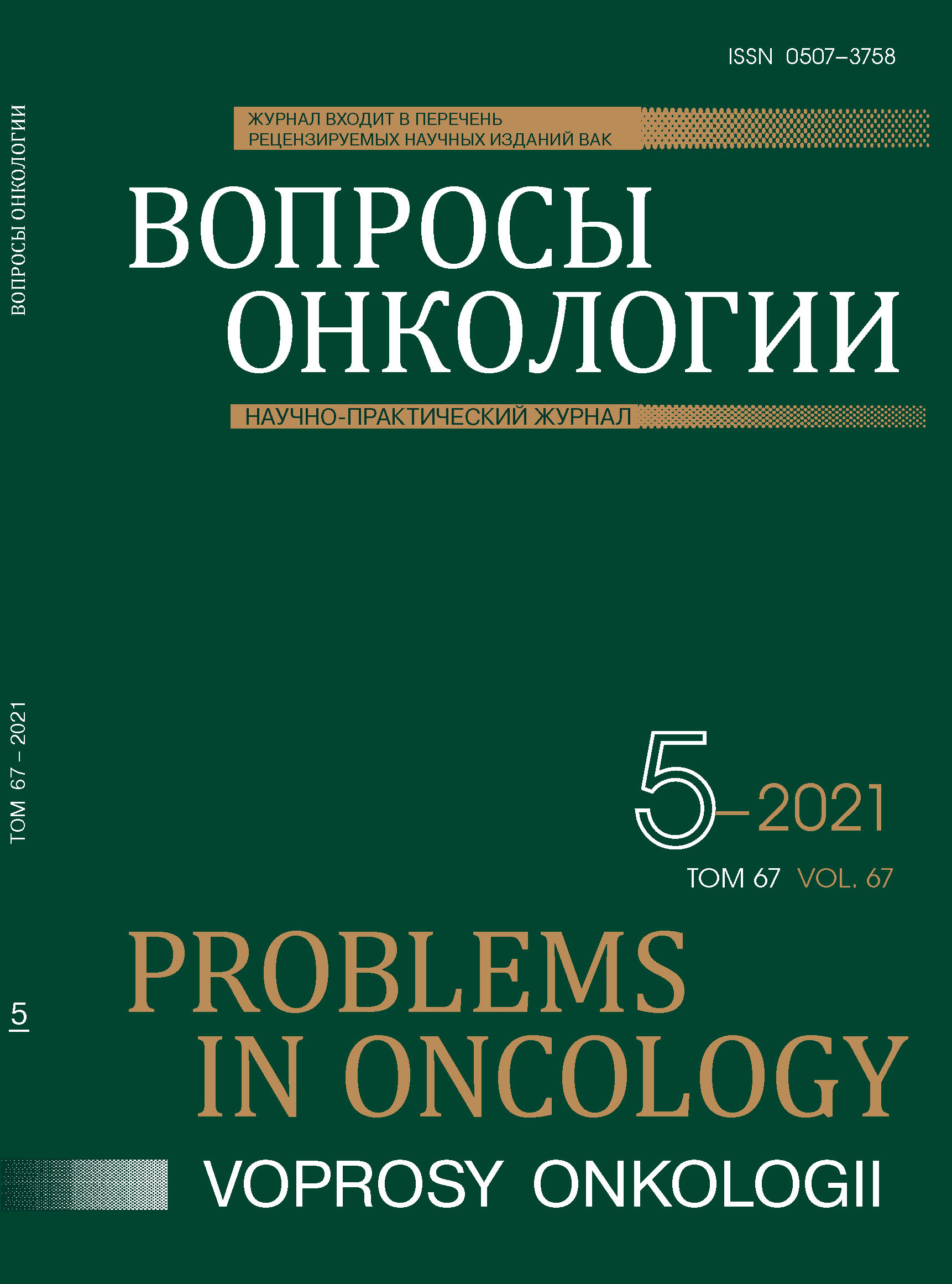摘要
Нейроэндокринные новообразования (НЭН) желудка включают в себя гетерогенную группу неоплазий, характеризующихся разными патогенетическими механизмами, метастатическим потенциалом и прогнозом. Встречаемость НЭН желудка за последние несколько десятилетий увеличилась в 15 раз. Необходимо чётко различать высокодифференцированные нейроэндокринные новообразования (НЭО) желудка и нейроэндокринный рак (НЭР) желудка, а также смешанные нейроэндокринные-ненейроэндокринные неоплазии.
На сегодняшний день существуют три классификации, активно применяемые в клинической практике: клинико-морфологическая классификация, классификация ВОЗ, классификация TNM. Необходимо отметить, что за прошедшие 5 лет данные классификации претерпели важные изменения. В клинико-морфологической классификации, в дополнение к существующим трем типам, рядом авторов предложено добавить 4-й тип (развивающийся на фоне неадекватного функционирования протонной помпы) и 5-й тип (развивающийся у пациентов, длительно получающих терапию ингибиторами протонной помпы). В классификации ВОЗ 2019 г. важным изменением является принятие того, что высокодифференцированные НЭО могут иметь высокую степень злокачественности (Grade) — Grade III. Основные изменения в 8-й редакции классификации TNM, (2017 г.) коснулись дифференцировки символа М.
Таким образом, на сегодняшний день классификации НЭН желудка позволяют достаточно точно характеризовать степень распространённости опухолевого процесса, патогенез, лежащий в основе их развития, характер течения заболевания и его прогноз. Они ложатся в основу выбора адекватной лечебной тактики, дающей возможность добиться наиболее благоприятного результата.
参考
Dasari A, Shen C, Halperin D et al. Trends in the Incidence, Prevalence, and Survival Outcomes in Patients With Neuroendocrine Tumors in the United States // JAMA Oncol. 2017;3(10):1335–1342. https://doi:10.1001/jamaoncol.2017.0589
Jesinghaus M, Konukiewitz B, Keller G et al. Colorectal mixed adenoneuroendocrine carcinomas and neuroendocrine carcinomas are genetically closely related to colorectal adenocarcinomas // Mod Pathol. 2017;30(4):610–619. https://doi:10.1038/modpathol.2016.220
Uccella S, La Rosa S. Looking into digestive mixed neuroendocrine — nonneuroendocrine neoplasms: subtypes, prognosis, and predictive factors // Histopathology. 2020;77(5):700–717. https://doi:10.1111/his.14178
Перегородиев И.Н., Бохян В.Ю., Делекторская В.В., Стилиди И.С. Нейроэндокринные опухоли желудка. Современная классификация // Российский онкологический журнал. 2016;21:81–85. https://doi:10.18821/1028-9984-2016-21-1-81-85 [Peregorodiev I.N., Bokhian V.Y., Delektorskaya V.V., Stilidi I.S. Neuroendocrine tumors of stomach. Modern classification // Russian Journal of Oncology. 2016;21:81–85 (in Russ.)]. https://doi:10.18821/1028-9984-2016-21-1-81-85
Carney JA, Go VL, Fairbanks VF et al. The syndrome of gastric argyrophil carcinoid tumors and nonantral gastric atrophy // Ann Intern Med. 1983;99(6):761–766 https://doi:10.7326/0003-4819-99-6-761
Rindi G, Luinetti O, Cornaggia M et al. Three subtypes of gastric argyrophil carcinoid and the gastric neuroendocrine carcinoma: a clinicopathologic study // Gastroenterology. 1993;104(4):994–1006. https://doi:10.1016/0016-5085(93)90266-f
Bordi C. Neuroendocrine pathology of the stomach: the Parma contribution // Endocr Pathol. 2014;25(2):171–180. https://doi:10.1007/s12022-014-9315-x
La Rosa S, Rindi G, Solcia E, Tang L. Gastric neuroendocrine neoplasms. WHO classification of tumors digestive system tumors. 5th ed. Lyon, France: International Agency for Research on Cancer (IARC), 2019:104–109.
Bordi C, Yu JY, Baggi MT et al. Gastric carcinoids and their precursor lesions. A histologic and immunohistochemical study of 23 cases // Cancer. 1991;67(3):663–672. https://doi:10.1002/1097-0142(19910201)67:3<663::aid-cncr2820670323>3.0.co;2-l
Oksanen A, Sipponen P, Karttunen R et al. Atrophic gastritis and Helicobacter pylori infection in outpatients referred for gastroscopy // Gut. 2000;46(4):460–463. https://doi:10.1136/gut.46.4.460
Sato Y, Iwafuchi M, Ueki J et al. Gastric carcinoid tumors without autoimmune gastritis in Japan: a relationship with Helicobacter pylori infection // Dig Dis Sci. 2002;47(3):579–585. https://doi:10.1023/a:1017972204219
Berna MJ, Annibale B, Marignani M et al. A prospective study of gastric carcinoids and enterochromaffin-like cell changes in multiple endocrine neoplasia type 1 and Zollinger-Ellison syndrome: identification of risk factors // J Clin Endocrinol Metab. 2008;93(5):1582–1591. https://doi:10.1210/jc.2007-2279
Borch K, Ahrén B, Ahlman H et al. Gastric carcinoids: biologic behavior and prognosis after differentiated treatment in relation to type // Ann Surg. 2005;242(1):64–73. https://doi:10.1097/01.sla.0000167862.52309.7d
La Rosa S, Inzani F, Vanoli A et al. Histologic characterization and improved prognostic evaluation of 209 gastric neuroendocrine neoplasms // Hum Pathol. 2011;42(10):1373–1384. https://doi:10.1016/j.humpath.2011.01.018
Rappel S, Altendorf-Hofmann A, Stolte M. Prognosis of gastric carcinoid tumours // Digestion. 1995;56(6):455–462. https://doi:10.1159/000201276
Rindi G, Azzoni C, La Rosa S et al. ECL cell tumor and poorly differentiated endocrine carcinoma of the stomach: prognostic evaluation by pathological analysis // Gastroenterology. 1999;116(3):532–542. https://doi:10.1016/s0016-5085(99)70174-5
Vanoli A, La Rosa S, Miceli E et al. Prognostic Evaluations Tailored to Specific Gastric Neuroendocrine Neoplasms: Analysis Of 200 Cases with Extended Follow-Up // Neuroendocrinology. 2018;107(2):114–126. https://doi:10.1159/000489902
https://doi:www.nccn.org/professionals/physician_gls/pdf/neuroendocrine.pdf
Delle Fave GF, O'Toole D, Sundin A, Taal B, Ferolla P, Ramage J, Ferone D, Ito T, Weber W, Zheng-Pei Z, De Herder WW, Pascher A, Ruszniewski P; all other Vienna Consensus Conference participants.
https://doi:www.annalsofoncology.org/article/S0923-7534(20)36394-8/fulltext
La Rosa S, Vanoli A. Gastric neuroendocrine neoplasms and related precursor lesions // J Clin Pathol. 2014;67(11):938–948. https://doi:10.1136/jclinpath-2014-202515
Ooi A, Ota M, Katsuda S et al. An Unusual Case of Multiple Gastric Carcinoids Associated with Diffuse Endocrine Cell Hyperplasia and Parietal Cell Hypertrophy // Endocr Pathol. 1995;6(3):229–237. https://doi:10.1007/BF02739887
Abraham SC, Carney JA, Ooi A et al. Achlorhydria, parietal cell hyperplasia, and multiple gastric carcinoids: a new disorder // Am J Surg Pathol. 2005;29(7):969–975. https://doi:10.1097/01.pas.0000163363.86099.9f
Fossmark R, Calvete O, Mjønes P et al. ECL-cell carcinoids and carcinoma in patients homozygous for an inactivating mutation in the gastric H(+) K(+) ATPase alpha subunit // APMIS. 2016;124(7):561–566. https://doi:10.1111/apm.12546
Trinh VQ, Shi C, Ma C. Gastric neuroendocrine tumours from long-term proton pump inhibitor users are indolent tumours with good prognosis // Histopathology. 2020;77(6):865–876. https://doi:10.1111/his.14220
Lee HE, Mounajjed T, Erickson LA, Wu TT. Sporadic Gastric Well-Differentiated Neuroendocrine Tumors Have a Higher Ki-67 Proliferative Index // Endocr Pathol. 2016;27(3):259–267. https://doi:10.1007/s12022-016-9443-6
La Rosa S, Solcia E. New insights into the classification of gastric neuroendocrine tumours, expanding the spectrum of ECL-cell tumours related to hypergastrinaemia // Histopathology. 2020;77(6):862–864. https://doi:10.1111/his.14226
WHO Classification of Tumours Editorial Board, eds. WHO Classification of Tumors: Digestive System Tumours. 5th ed. Lyon, France: International Agency for Research on Cancer (IARC); 2019. World Health Organization Classification of Tumours; vol 1.
Rindi G, Klimstra DS, Abedi-Ardekani B et al. A common classification framework for neuroendocrine neoplasms: an International Agency for Research on Cancer (IARC) and World Health Organization (WHO) expert consensus proposal // Mod Pathol. 2018;31(12):1770–1786. https://doi:10.1038/s41379-018-0110-y
Rindi G, Arnold R, Bosman FT et al. Nomenclature and classification of neuroendocrine neoplasms of the digestive system. In: Bosman F.T. et al. WHO Classification of Tumours of the Digestive System. Lyon: IARC Press, 2010:13–4.

This work is licensed under a Creative Commons Attribution-NonCommercial-NoDerivatives 4.0 International License.
© АННМО «Вопросы онкологии», Copyright (c) 2021
